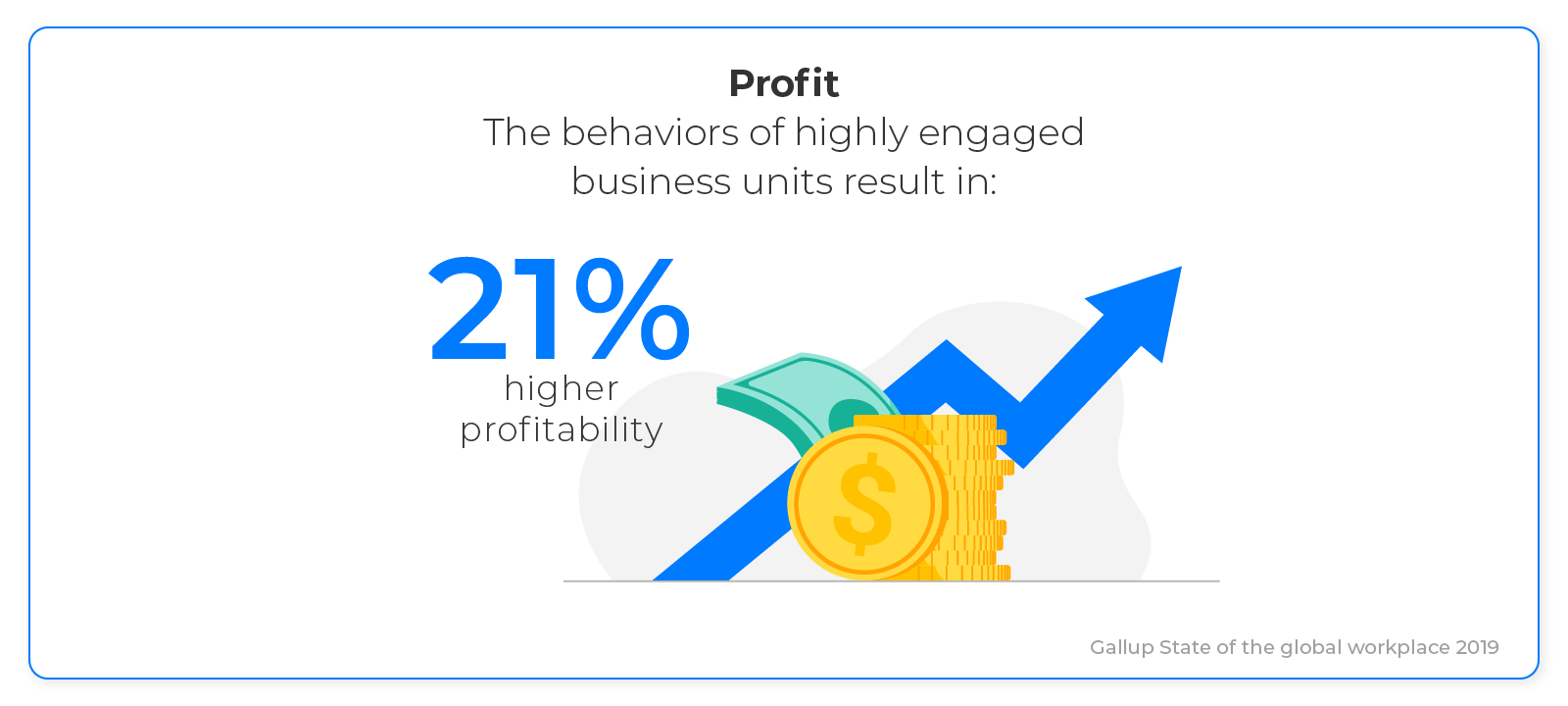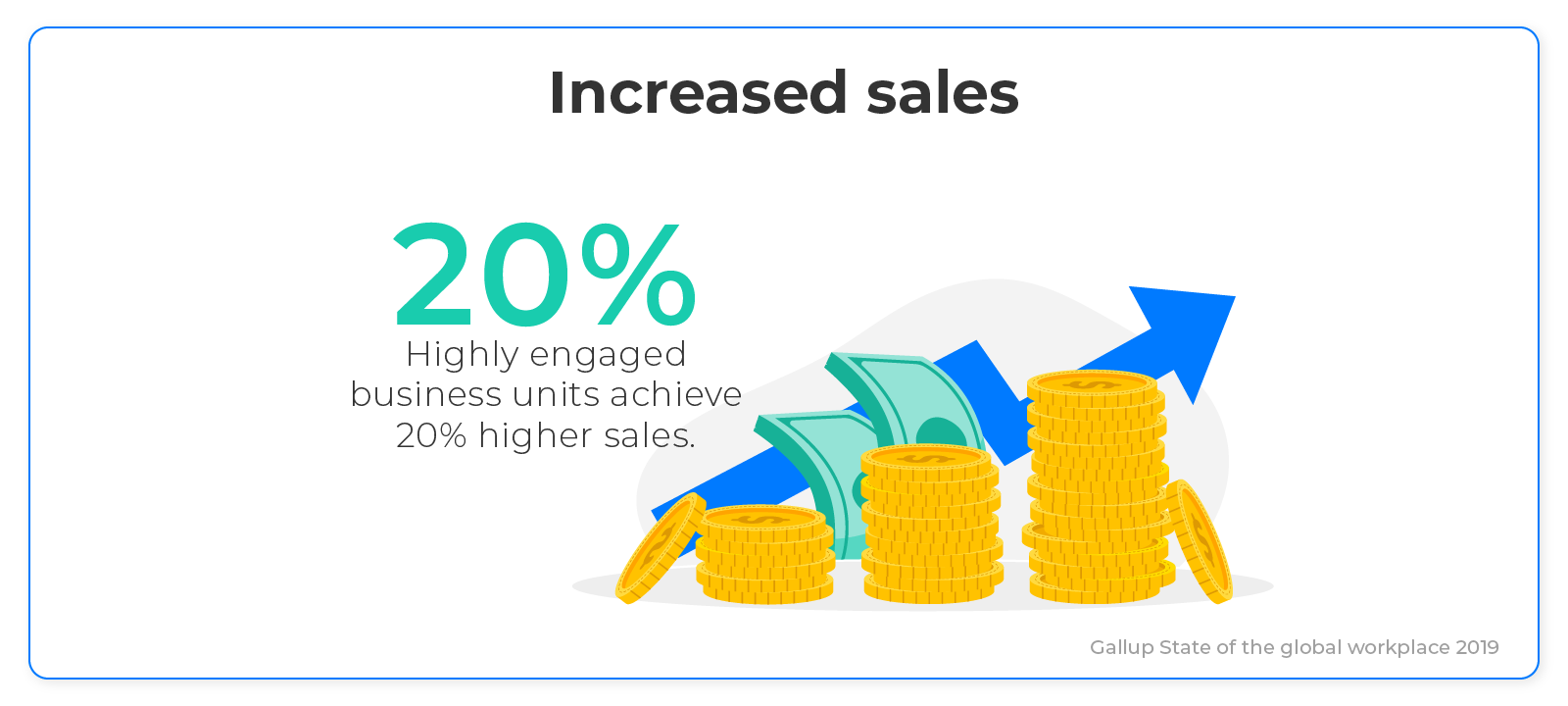When it comes to running a successful business, performance is key. But what most employers don’t consider, is how investing in people can help to improve the productivity and profitability of a company.
Whilst most businesses focus on deadlines and new infrastructure to improve client experience, the importance of engaging employees is simply pushed aside or forgotten. It’s easy to get caught up in the figures, and forget that you need you team to be as enthusiastic about your product as you are. Recent studies have shown that investing in employee engagement initiatives will positively impact on your productivity and profitability. Now, more than ever, is the time to reinvest in your people.
What is employee engagement?
Put simply, employee engagement is the act of creating an environment where employees feel able to produce work to the best of their abilities. Studies show that fostering this type of environment produces highly engaged employees, who will go above and beyond the remit of their role to ensure company success.
It might be easy to assume that an outwardly happy employee is an engaged employee, but happiness is in fact only one factor of true employee engagement. To create an environment conducive to high performance, employers must put in place infrastructure to support and nurture employees both physically and mentally. This includes fostering friendships, focusing on wellbeing and providing clear professional progression, to name a few.
Why are employee engagement statistics important?
Studies on the link between employee engagement and company success have become increasingly popular in recent years, producing employee engagement productivity statistics that highlight the strong correlation between the two - the more engaged your team is, the more productive and profitable they will be.
Emerging employee engagement trends can be found in these increasingly detailed reports, providing employers with an insight into the most important areas of engagement, and how implementing new strategies will positively impact on company performance. These clear statistics on employee engagement essentially provide employers with the perfect foundation from which to build their employee engagement initiatives.
Without these employee engagement statistics to back up your plans, it can be difficult to know where to start with your initiative, and even to understand why you need an employee engagement strategy in the first place.
Employee engagement and productivity statistics
Numerous studies have been conducted on the link between engagement and company success, resulting in an extensive number of statistics about employee engagement. We have selected a number of pivotal statistics to help you consider your approach to employee engagement.
#1 Only 15 % of employees who work full time for an employer, worldwide, are engaged at work
According to Gallup employee engagement statistics, only 15% of the global workforce are engaged at work, with Western Europe seeing a fall in that figure to just 10%, and the UK reporting statistics as low as 8%. These findings suggest that the majority of employees are, at the very best, not feeling engaged at work and viewing their company negatively, or at worst, doing the bare minimum to get through the working day, with no real concern for company success, and looking to change jobs.
#2 Highly engaged teams are 21% more profitable than those identifying as unengaged at work
The employee engagement statistics Gallup have reported, suggest that highly engaged teams show 21% greater profitability, see a 41% reduction in absenteeism and 59% less staff turnover. The report’s findings showed that those employers who focused on employee engagement as a key part of their business strategy, were most successful. Highlighting the direct link between implementing employee engagement initiatives and experiencing improved profitability.

#3 89% of HR leaders believe employee recognition is vital to successful outcomes
Human resources employee engagement statistics, in a recent report, highlight the importance of ongoing peer feedback and check-ins when it comes to employee engagement and retention. The study’s findings showed that employees want to have their contributions to a company recognised to instil a sense of purpose and meaning. A clear sign that employee engagement should sit at the centre of a company’s strategic plans.
#4 Only 44% of employees cite wages as the most important factor of a job
Recent statistics about employee engagement show that millennials and post-millennials are set to make up at least 50% of the workforce in 2020, with studies showing that their professional priorities differ greatly from previous generations. The findings related to this group of employees show that they increasingly prioritise accountability and self-responsibility over wages, with only 44% citing salary as the most important factor when looking for a new job. Highlighting the importance of implementing infrastructure that values autonomy and shows employees that they are integral to company success, to increase employee engagement.
#5 A highly engaged team sees a 20% increase in sales when compared with an unengaged workforce
Gallup statistics on employee engagement show that companies with a highly engaged workforce experience a 10% increase in customer ratings and an increase of 20% in sales. These finding strongly suggesting that employees who are actively engaged with their company will dramatically outperform those who identify as being unengaged from a company. Highlighting the importance of investing in employee engagement initiatives to improve company performance.

Putting employee engagement statistics into action
The statistics are clear – there is a direct correlation between employee engagement and improved company performance. It’s important to utilise these findings and implement an employee engagement strategy, using employee engagement ideas, to enhance performance.
To support and monitor your employee engagement efforts, it can help to invest in an employee engagement platform. Industry leaders are increasingly turning to an employee engagement app as one of their key drivers of employee engagement. An engagement solution can be used to carry out an employee engagement survey to identify areas for improvement, whilst also solving communication and collaboration issues by providing users with a platform to share information and interact organically on.
Creating an engaged workforce is key to fostering optimal performance levels. By utilising the trends identified in employee engagement studies, you can build a strategy that underpins the success of your organisation, improving productivity and profitability.
Topics:
Employee Engagement







.jpg)
.jpg)